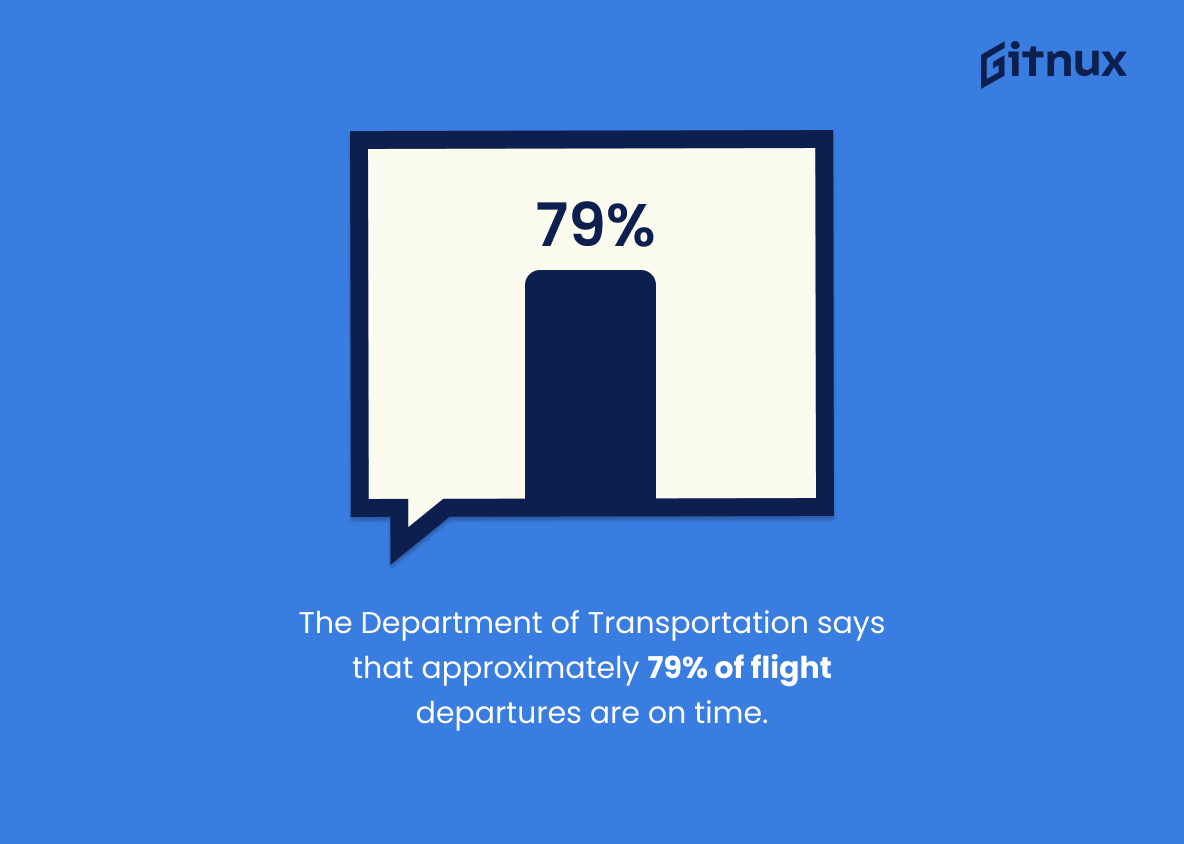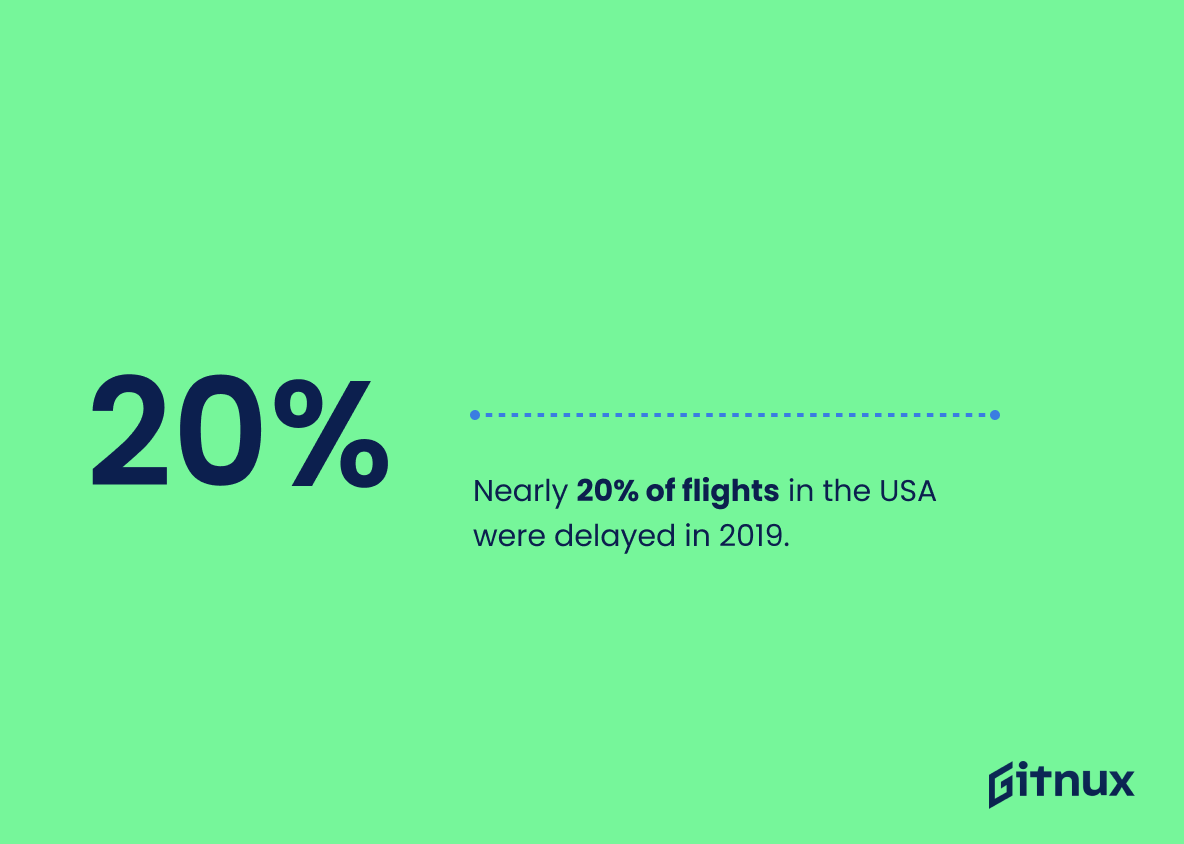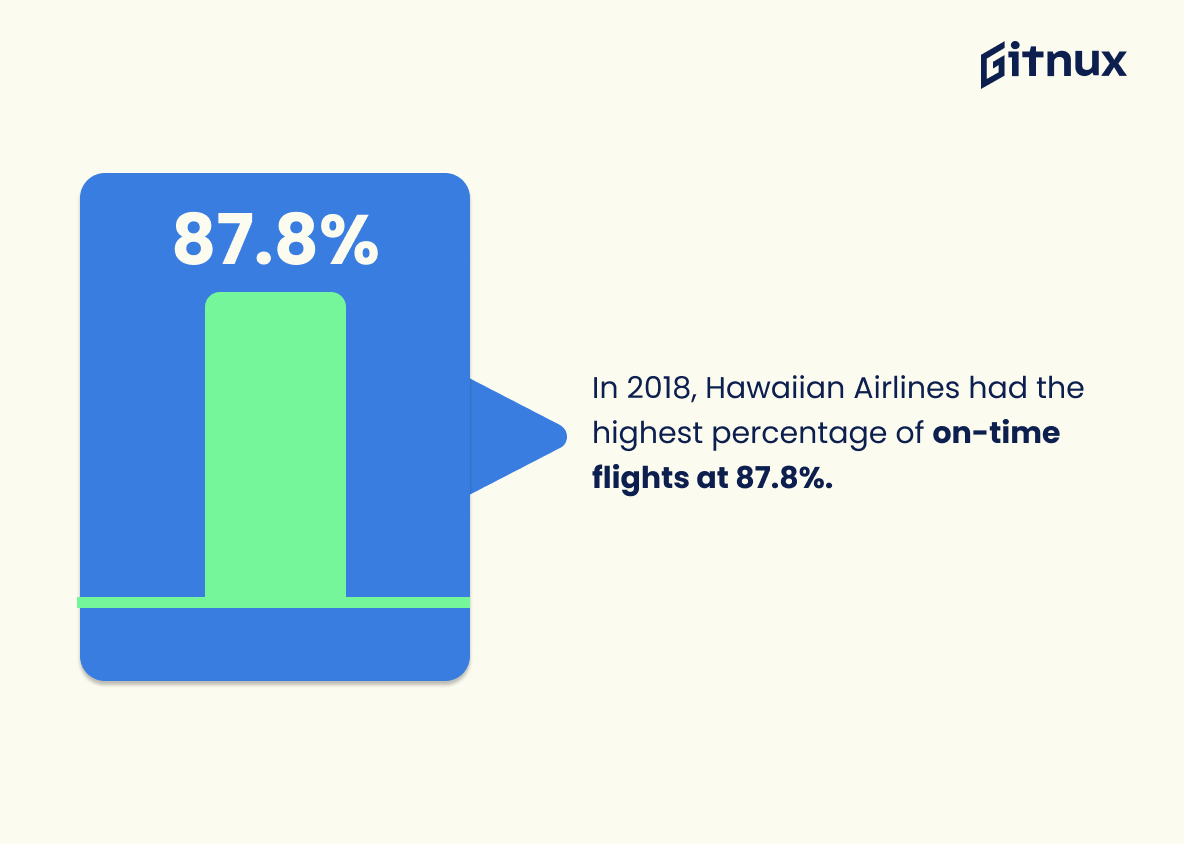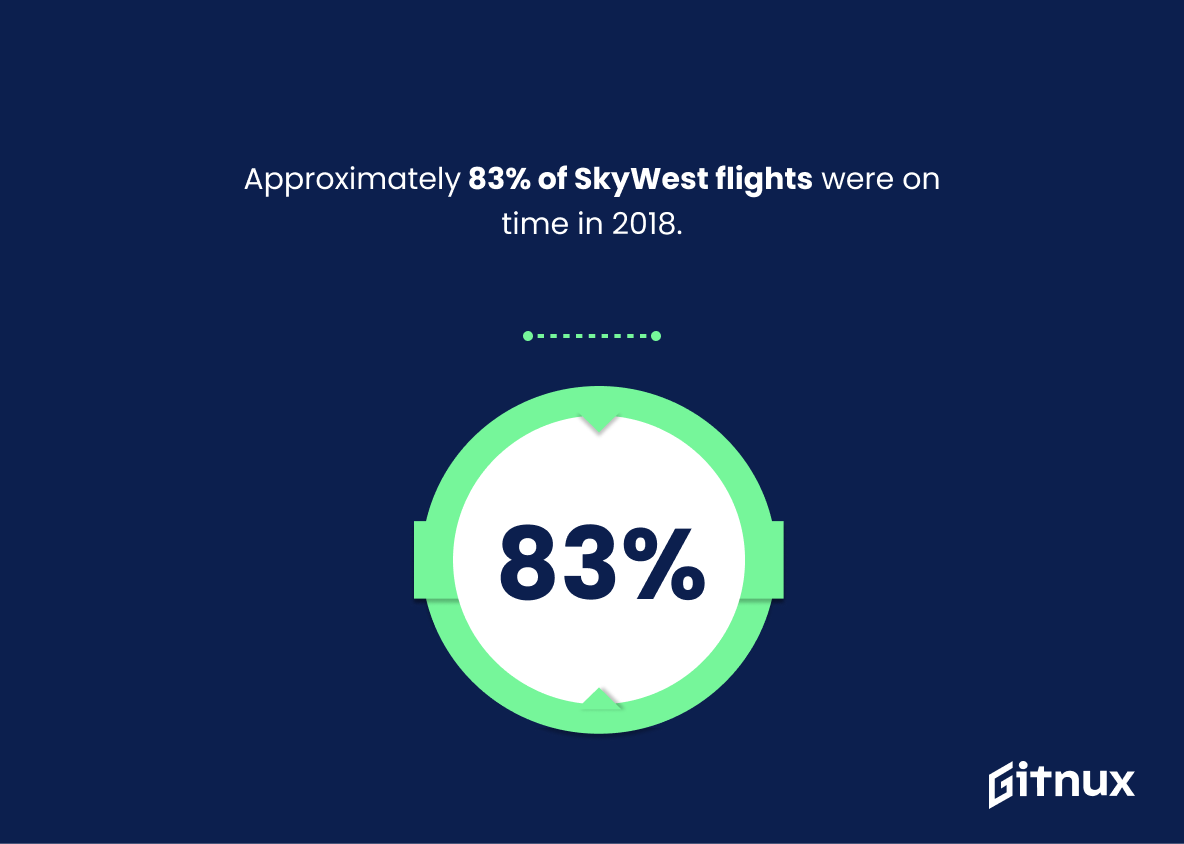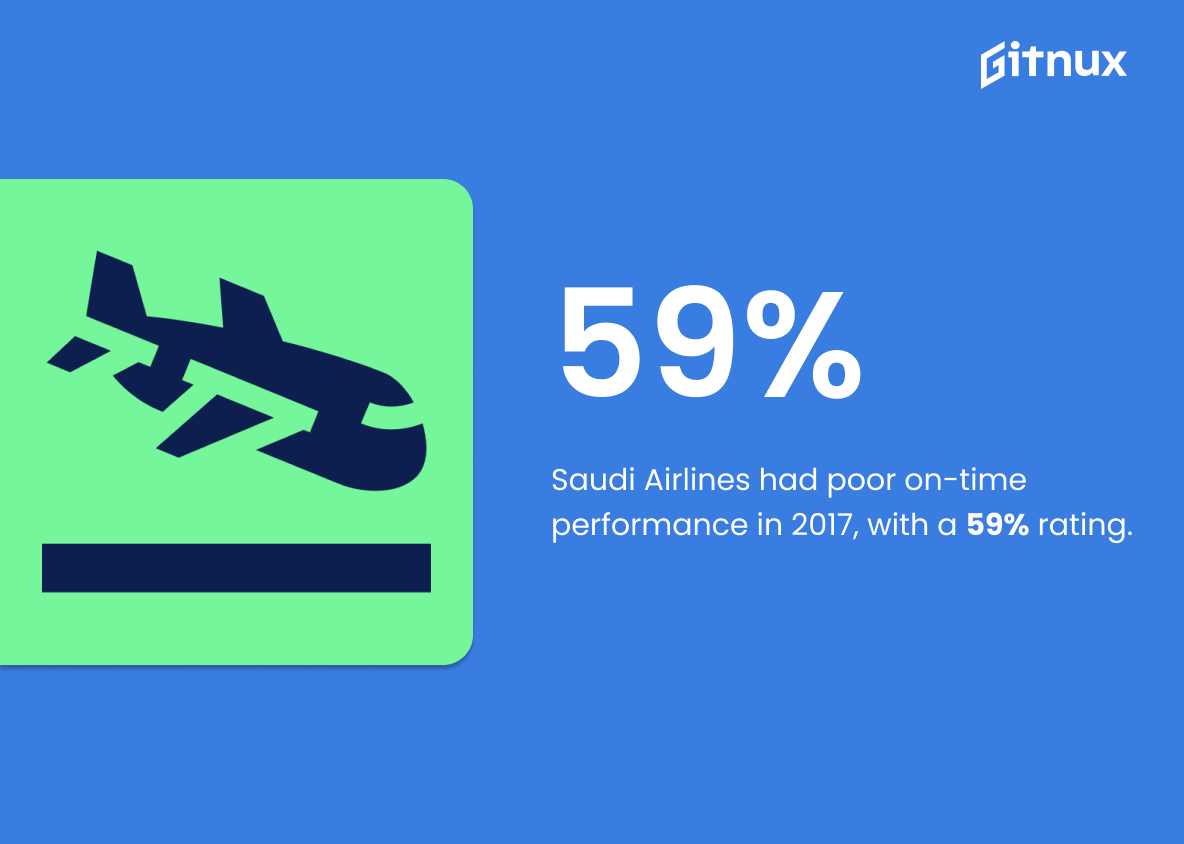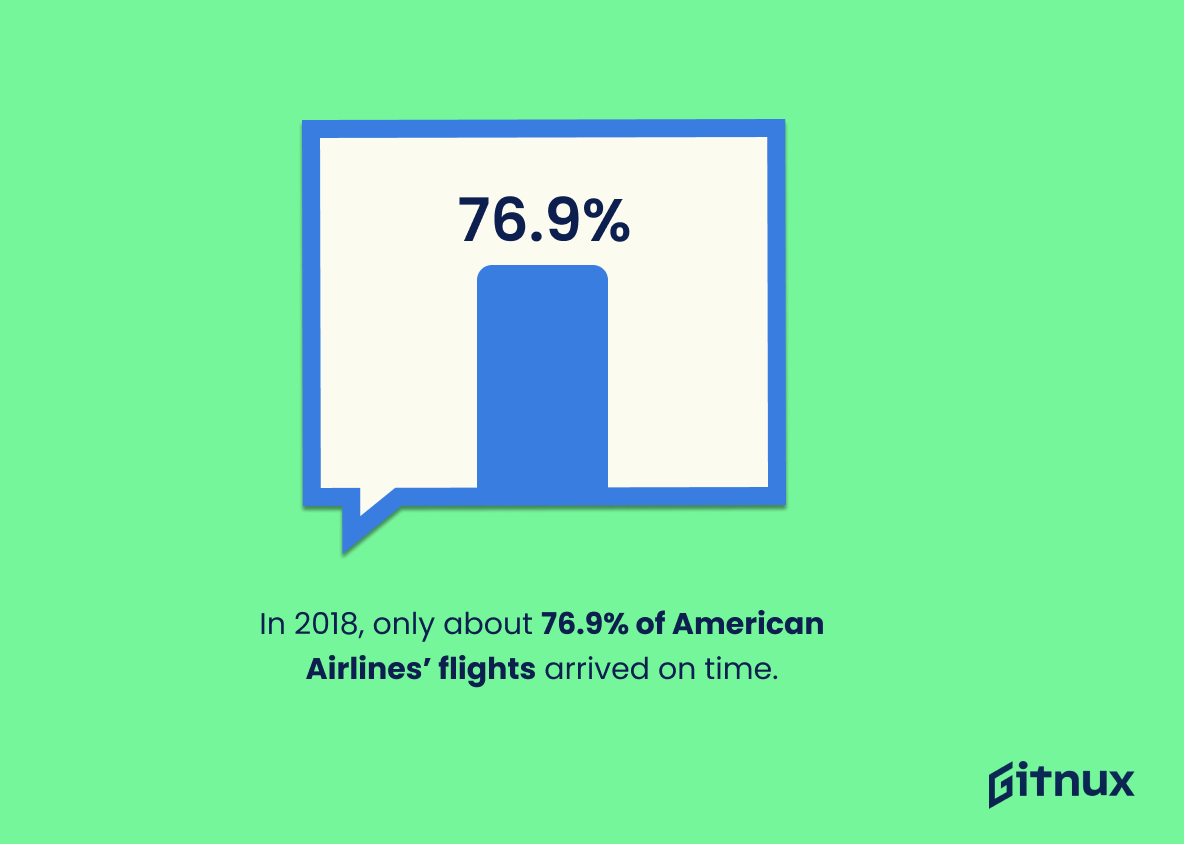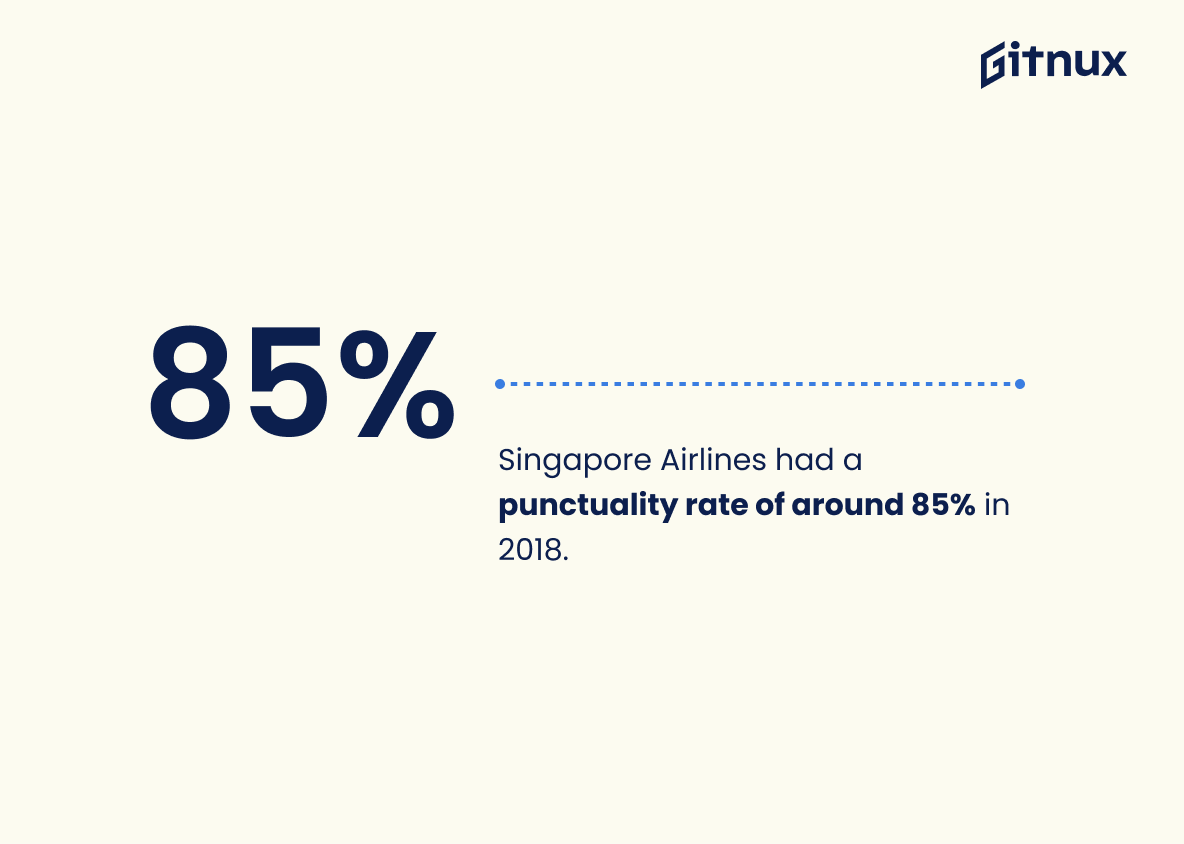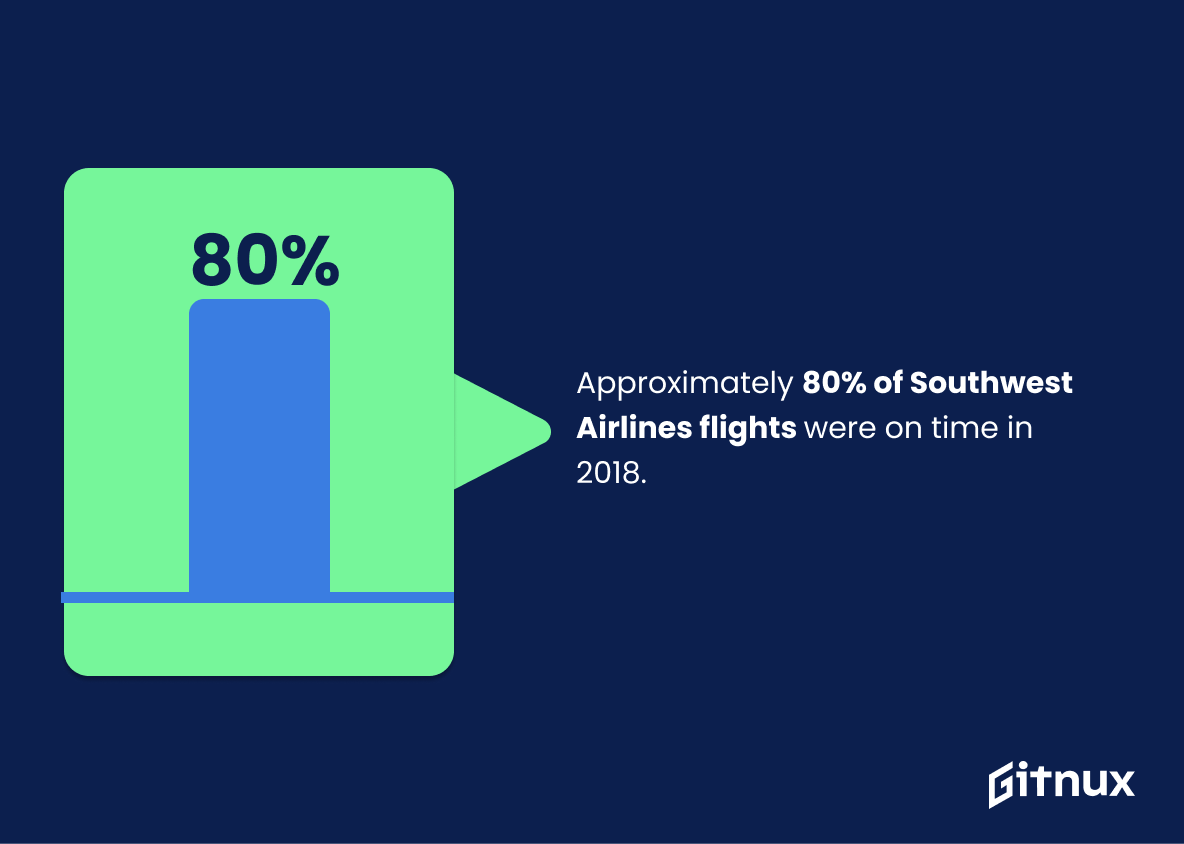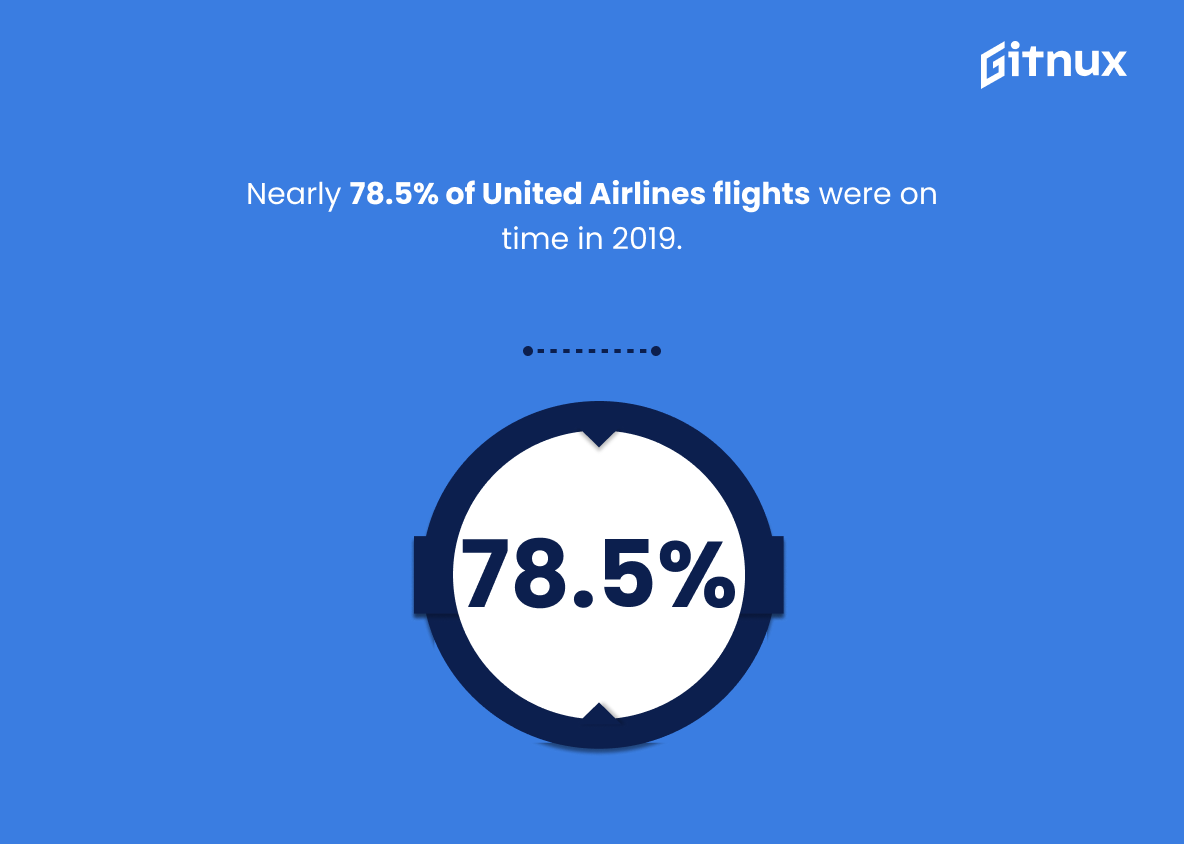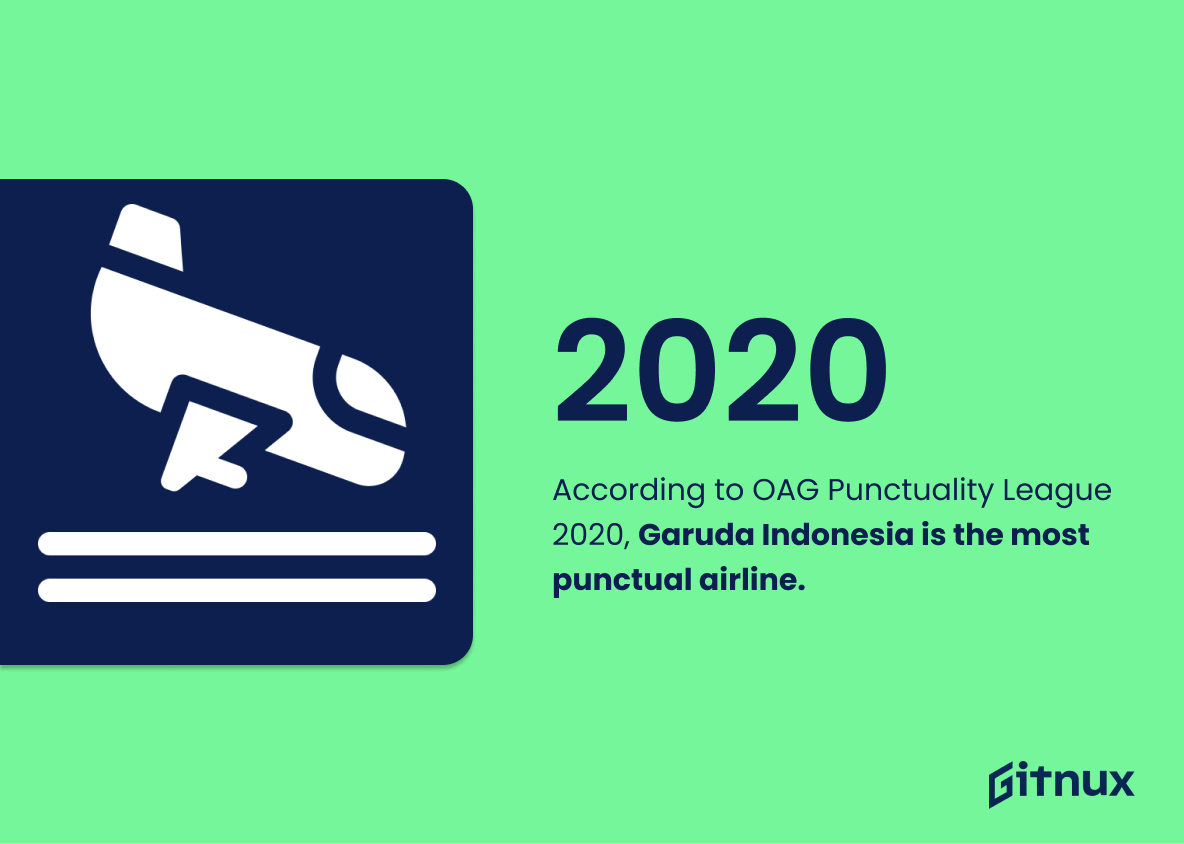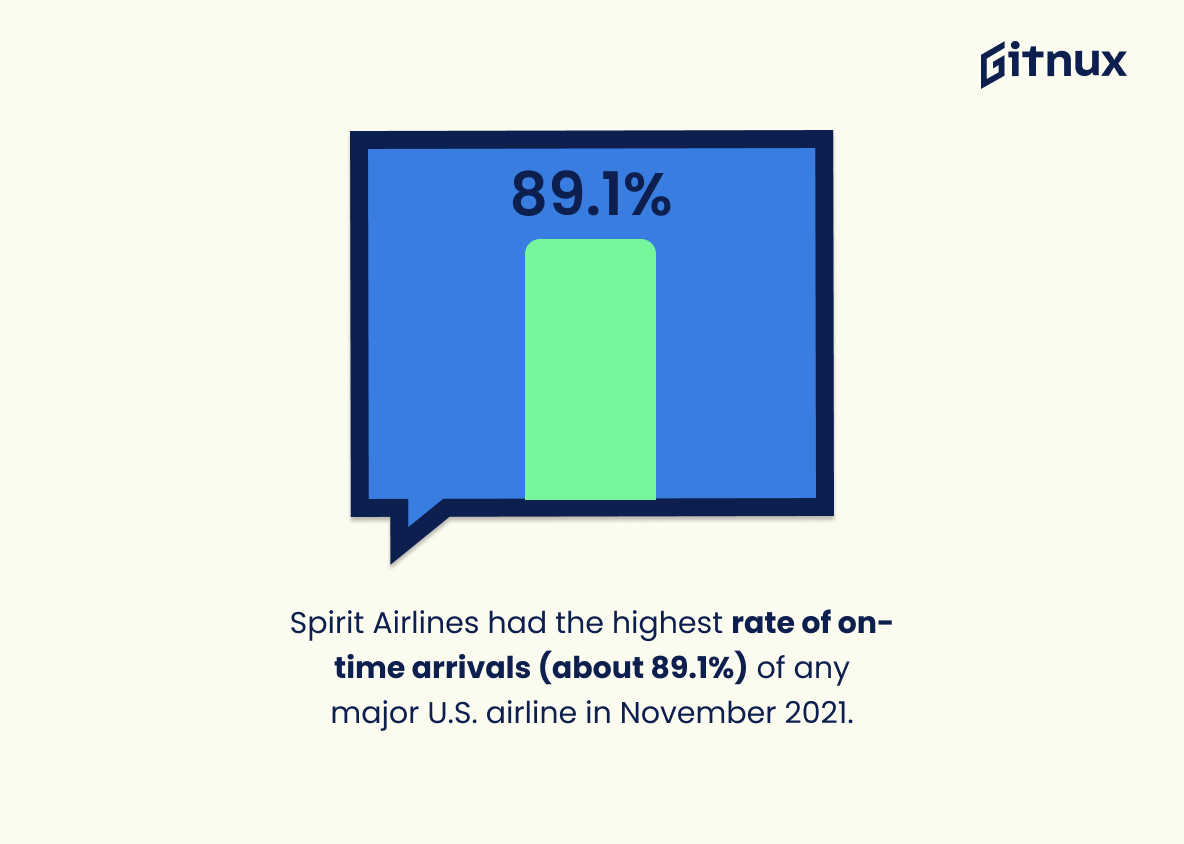Navigating the world of air travel can often be an exercise in uncertainty, particularly when it comes to punctuality. Yet, how frequently do flights actually take off and land as per their scheduled time? Welcome to our in-depth exploration of on-time flights’ statistics. Whether you’re a regular business commuter or a once-a-year vacationer, understanding these numbers can arm you with valuable insights to plan your trips better. From identifying the most punctual airlines to unveiling the most reliable airports, our focus in this blog post is to help you arrive at your destination without missing a beat or a connection. Read on as we unlock the intriguing truths and trends behind on-time flight statistics.
The Latest On Time Flights Statistics Unveiled
74.5% of LaGuardia, New York flights were on time in 2020.
When one dives into the ocean of On Time Flights Statistics, the nugget of information revealing that 74.5% of LaGuardia, New York flights were punctual in 2020 emerges as a shining pearl. This golden ratio of punctuality from an airport nestled in one of the busiest cities worldwide, New York, becomes a beacon drawing travelers’ attention. It is not just a number, but a testimony to the efficiency and dedication that goes into managing flight schedules amidst bustling aviation traffic. This percentage not only sets a benchmark for other airports but also provides valuable insights to travelers, influencing their choice of airports and their faith in flight punctuality. Indeed, it’s like a strong thread in the grand tapestry of On Time Flights Statistics, having its unique importance and contribution.
The Department of Transportation says that approximately 79% of flight departures are on time.
Drilling down into the world of flight punctuality, imagine this: nearly four out of every five flights you board are leaving just as scheduled. The Department of Transportation’s assertion that a substantial 79% of flight departures are on time serves as an evidence-laced backbone for our discussion on On-Time Flights Statistics. This figure not only dictates the level of efficiency and reliability airlines maintain but also directly influences passenger satisfaction and travel planning. A testament to the aviation industry’s commitment to timely services, it provides a solid ground in examining the patterns, causes, and implications of flight delays in our blog post.
Nearly 20% of flights in the USA were delayed in 2019.
Delving deep into the intricate world of On Time Flights Statistics, the revelation that nearly 20% of flights in the USA faced delays in 2019 presents an intriguing pit stop. This striking proportion, almost one in every five flights, sends a clear signal about the magnitude and ubiquitous nature of flight delays across the states. It colors the narrative with shades of genuine urgency, laying the groundwork for a comprehensive dive into the influential factors and the subsequent ripple effects on personal schedules, business timelines, and prevalent logistical considerations.
This 20% is not an isolated number—rather, it’s a harbinger of the bigger scenario unfolding in the aviation industry. It underpins the impressive yet complex machinery of aviation efficiency and underscores the critical importance of punctuality in flight operations. It propels us to look beyond the raw figures—it beckons us to explore solutions and strategies improving punctuality, ultimately aiming to enhance the customer experience on a grand scale.
In 2018, Hawaiian Airlines had the highest percentage of on-time flights at 87.8%.
Highlighting Hawaiian Airlines’ impressive track record with 87.8% of flights being on-time in 2018 serves as a beacon in the world of air travel. It underscores the company’s dedication to maintaining a reliable service, minimising passenger inconvenience, and leading the industry in punctuality. This statistic acts as a pedestal to air travellers, providing compelling evidence of airline performance and helping them make an informed decision. Furthermore, this exemplary performance sets a commendable benchmark for other airlines, instantiating a kind of competitive environment that ultimately serves customer interests.
Approximately 83% of SkyWest flights were on time in 2018.
Delving into the world of on-time flights statistics, a compelling piece of data stands out – SkyWest Airlines, with an impressive punctuality record, had approximately 83% of its flights arriving on time in 2018. This metric is significant as it showcases SkyWest’s commitment to maintaining its schedules and highlights its consideration towards passengers’ time, creating a smooth and reliable travel experience.
In a blog post focused on on-time flights statistics, this information sets a benchmark for other airlines, giving readers a comparative frame of reference. Further, it propels a discussion around factors that contribute to punctuality – efficiency of operations, maintenance schedules, and crew management to name a few. Unpacking this statistic can help to understand what steps SkyWest is taking to achieve this high percentage while also catalyzing a broader conversation about industry standards and best practices.
In 2017, Saudi Arabian Airlines had one of the worst on-time performances globally, with only 59% of its flights arriving on time.
Delving into Saudi Arabian Airlines’ 2017 performance presents a compelling talking point in our exploration into On-Time Flights Statistics. A mere 59% punctuality rate paints a vivid picture of the challenges faced in achieving timely arrivals. This tarnished record not only placed it among the worst performers globally that year, but it also underscores the complex dynamics of punctuality in global air travel. It serves as a telling barometer of operational efficiency, offering intriguing insights on factors like flight scheduling, airport logistics, and even broader socio-economic indicators. More than just another statistic, it virtually opens up the airliner’s cockpit to us, revealing cascading effects on passenger satisfaction, company reputation, and potential business losses or gains.
In 2018, only about 76.9% of American Airlines’ flights arrived on time.
Unveiling the punctuality factor of American Airlines, the figure of 76.9% on-time arrivals in 2018 paints an insightful picture on the airline’s reliability. This nugget of data becomes a cornerstone in our analysis of On Time Flights Statistics, shedding light on the practicality of passengers’ expectations meeting the reality. It sets the stage for us to compare American Airlines’ performance against industry norms and counterparts. More than just numbers, it mirrors the logistical efficiency and logistical muscle that American Airlines holds in navigating through unforeseen circumstances in assuring punctual service.
Singapore Airlines had a punctuality rate of around 85% in 2018.
Punctuality serves as the heartbeat of modern air travel. So let’s illustrate the importance of this through a real-world example. Let’s clothe it with a badge of honor and behold Singapore Airlines, who clocked a punctuality rate of near 85% back in 2018. This rate is not just an ephemeral data point but rather a mirror reflecting their commitment to time management and operational efficiency. Within the intricate dance of On-Time Flights Statistics, such metrics are influential, providing a compelling narrative about an airline’s reliability, consumer’s preference and the overall impression in the highly competitive aviation industry.
Approximately 80% of Southwest Airlines flights were on time in 2018.
Highlighting that ‘Approximately 80% of Southwest Airlines flights were punctual in 2018′ gives a significant insight into the airline’s performance, within a blog post about On Time Flights Statistics. Such impressive punctuality demonstrates an impressive level of efficiency and commitment to customer service, a critical consideration for readers weighing up which airline they should fly with. In addition, it provides a reliable benchmark against which readers can compare the performance of other airlines. Thus, this statistic holds great value in enlightening potential travelers, illustrates industry standards and trends, and fosters an informed dialogue around airlines’ performance and reliability.
Nearly 78.5% of United Airlines flights were on time in 2019.
Highlighting that nearly 78.5% of United Airlines flights arrived on schedule in 2019 provides compelling insight into the overall punctuality and reliability of the airline’s services. In the narrative of on-time flight statistics, it carves a reliable and dependable image for the airliner. This piece of data serves as an integral touchstone for consumers choosing between different airlines, looking for minimal interruptions and delays in their travel plans. Furthermore, for United Airlines, this statistic stands as testament to their operational efficiency, influencing customer trust, satisfaction, and ultimately, market positioning. Thus, these on-time performance statistics can significantly shape public opinion, consumer behavior, and competitive dynamics in the aviation industry.
According to OAG Punctuality League 2020, Garuda Indonesia is the most punctual airline.
Highlighting the OAG Punctuality League 2020’s point of Garuda Indonesia being the most punctual airline in a blog post about On Time Flights Statistics paints an in-depth picture of the air travel landscape. This statistic serves as a powerful anchor, emphasizing the importance of timeliness in aviation and underscoring Garuda Indonesia’s commitment to respecting passenger’s time. It elevates the post by grounding abstract statistics in a concrete example, compelling readers to consider how airlines’ punctuality impacts their personal or business travel. Moreover, it offers a credible yardstick for gauging and comparing the performance of global carriers on schedule adherence – an element that is often as critical as ticket prices and in-flight amenities for many seasoned travelers.
Spirit Airlines had the highest rate of on-time arrivals (about 89.1%) of any major U.S. airline in November 2021.
Painting a vivid portrait of the current U.S. aviation landscape, the statistic pertinent to Spirit Airlines’ high on-time arrival rate serves as a beacon of punctuality. In the intricate ballet of the skies where every pendulum swing of the clock matters, the punctuality attribute stands tall. Spirit Airlines, with an on-time arrival rate of 89.1% in November 2021, sets itself apart by demonstrating top-tier efficiency.
This stellar statistic aligns bright and shining in a blog post dedicated to on-time flight statistics. It underlines Spirit’s commitment to schedule integrity and offers a compelling narrative around their operational efficiency. Readers can appreciate the excellence, benchmark this level of service against other carriers and potentially influence their future travel choices.
Furthermore, it sets a high bar for other airlines, inspiring them to enhance their measures for punctuality and efficiency. In essence, this juicy nugget of information about Spirit Airlines fuels a vibrant discussion around on-time flight statistics and the quest for optimal service delivery in the aviation industry.
Conclusion
In conclusion, on-time flights statistics serve as an important measure of an airline’s efficiency and reliability. These figures help gauge punctuality and provide valuable insights into the airline’s operational performance. While air travel inevitably involves some degree of uncertainty, understanding these statistics allows passengers to make informed travel decisions and set realistic expectations. Ultimately, a high rate of on-time flights reflects an airline’s commitment to customer satisfaction, fostering trust and loyalty among its clientele. Therefore, to ensure a smooth and timely travel experience, it’s advisable to always keep an eye on these crucial statistics.
References
0. – https://www.www.orlandosentinel.com
1. – https://www.www.bbc.co.uk
2. – https://www.edition.cnn.com
3. – https://www.www.bts.gov
4. – https://www.www.cnbc.com
5. – https://www.www.transportation.gov
6. – https://www.www.cnn.com
7. – https://www.it.usembassy.gov

